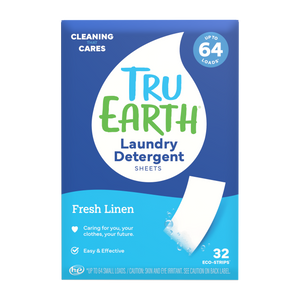Proper disposal of feminine hygiene products is essential for both personal and environmental hygiene. In this article, we'll explore the best practices for disposing of feminine hygiene products responsibly.
From understanding the environmental impact to practical disposal methods, this article aims to provide informative and useful tips.

Environmental Impact of Feminine Hygiene Products
Understanding the Environmental Impact
Feminine hygiene products contribute to environmental challenges due to their non-biodegradable nature. Traditional products often contain plastic and other materials that take years to decompose, leading to increased waste in landfills.
The environmental impact necessitates a shift toward more sustainable disposal methods. Embracing eco-friendly choices not only benefits our immediate surroundings but also contributes to a healthier planet for future generations.
Common Disposal Methods
1. Trash Bin Disposal
One of the most common methods of disposing of feminine hygiene products is placing them in the trash bin. However, this raises concerns about privacy, odor, and environmental impact, making it essential to explore alternative methods.
While this method provides a straightforward solution, it's necessary to consider more sustainable options that align with our commitment to a greener lifestyle.
2. Flushable Products
Some products are marketed as flushable, promising convenience and discretion. However, not all items labeled as flushable break down efficiently in sewage systems, contributing to clogs and environmental concerns.
Sustainable Disposal Practices
Biodegradable and Compostable Options
As environmental awareness continues to rise, there is an increasing availability of biodegradable and compostable feminine hygiene products in the market. These options are designed to address the environmental impact associated with traditional disposable products. Biodegradable products break down naturally over time, while compostable products can undergo a specific composting process to transform into nutrient-rich soil.
Choosing biodegradable and compostable feminine hygiene products reflects a commitment to sustainability and environmental responsibility. These products often utilize materials that are derived from renewable resources, such as plant-based fibers, and they are designed to minimize the ecological footprint associated with menstruation. By opting for these options, individuals can actively contribute to global sustainability efforts and promote a healthier planet.
Menstrual Cup Disposal
Menstrual cups have emerged as a popular and eco-friendly alternative to traditional disposable products. These reusable cups are typically made from medical-grade silicone, rubber, latex, or elastomer and can last for several years with proper care. One of the key advantages of menstrual cups is their long-term sustainability, as they significantly reduce the amount of waste generated compared to disposable options.
Proper disposal methods for menstrual cups involve cleaning and sanitizing the cup before ultimately discarding it. While the exact disposal process may vary based on the cup's material, many menstrual cups can be recycled or incinerated in facilities equipped to handle medical-grade materials. It's important to follow the manufacturer's guidelines for disposal to ensure that the cup is processed in an environmentally friendly manner.
The menstrual cup revolution signifies more than just an individual choice; it represents a collective movement toward a more sustainable menstruation culture. By embracing menstrual cups, individuals contribute to reducing the environmental impact of menstrual waste. This shift in consumer behavior aligns with broader global initiatives to minimize waste, promote recycling, and encourage responsible consumption.
The Future of Feminine Hygiene Product Disposal
Innovations in Sustainable Products
The feminine hygiene product market is currently experiencing noteworthy innovations aimed at enhancing sustainability. Manufacturers are increasingly focusing on developing products that address environmental concerns, incorporating advancements in materials, disposal methods, and product design. Emerging trends include the use of biodegradable and compostable materials, reduced packaging, and eco-friendly manufacturing processes.
Materials such as organic cotton, bamboo fibers, and other plant-based alternatives are gaining popularity for their minimal environmental impact. Additionally, there is a growing emphasis on creating products that are easily recyclable or made from recycled materials. Innovations in product design aim to optimize sustainability without compromising on performance, ensuring that consumers have access to effective and eco-friendly options.
Encouraging Policy Changes
Advocacy for responsible feminine hygiene product disposal extends beyond individual choices to influencing policy changes. As consumers, our collective voice holds significant power in shaping regulations and guidelines that drive manufacturers and policymakers toward more sustainable solutions.
Efforts to promote policies that prioritize the reduction of single-use plastics, encourage the use of biodegradable materials, and support recycling initiatives can have a lasting impact on the environmental footprint of feminine hygiene products.
Consumer engagement in advocacy groups, petitions, and awareness campaigns helps raise awareness about the environmental impact of feminine hygiene products and puts pressure on decision-makers to implement positive changes. By actively participating in these initiatives, consumers can contribute to a broader movement towards more sustainable and responsible practices within the industry.
Championing Individual Responsibility
Consumers play a pivotal role in shaping the future of feminine hygiene product disposal by championing individual responsibility. Taking proactive steps such as educating ourselves about sustainable options, making informed purchasing decisions, and properly disposing of products contribute to a collective effort for a more eco-friendly future.
Small, conscious choices made by individuals collectively form a significant force for change. By opting for reusable products, supporting brands with environmentally friendly practices, and spreading awareness about responsible disposal methods, consumers create a demand for sustainable solutions.

Navigating the Eco-Friendly Disposal of Feminine Hygiene Products
In conclusion, the proper disposal of feminine hygiene products is a varied issue that requires a comprehensive and eco-conscious approach.
By understanding the environmental impact, exploring sustainable disposal practices, addressing responsible disposal in public spaces, promoting education, anticipating future innovations, and championing individual responsibility, we can collectively contribute to a cleaner and more sustainable environment. Let's embrace responsible feminine hygiene product disposal practices for a healthier planet and a brighter future!

